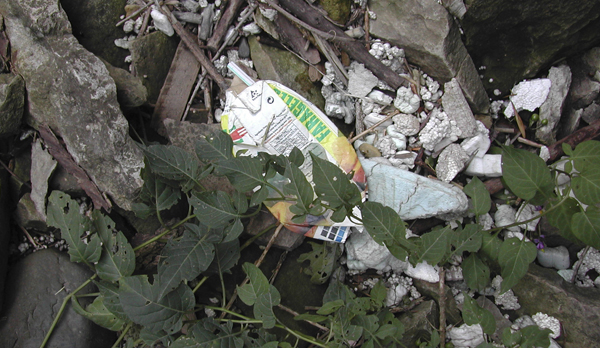You touch it every day, but do you really know packaging?
We’ve all done it, purchased a product because of, or in spite of, the packaging. A great package can get a consumer to buy almost any product at least once. But what do you really know about packaging?
To most people packaging is simply future garbage. But without packaging, there would be no modern economy.
Packaging not only protects products, getting them from the manufacturer to the end user, but informs, sells, dispenses, stabilizes, and — either cements the bond a consumer has with a product or unintentionally acts as a barrier to future purchase. (Jedlicka 2008)
It has been estimated that packaging accounts for 2-3% of the world’s GDP — and is growing at an annual rate of 4.5% globally. (The Dow Chemical Company n.d.)
In a UN report from the 1980s, it was the lack of packaging that was holding back many developing nations from adequately feeding their people, not the inability to grow food. Producers in developing nations are too often unable to get food from growing areas to population centers due to poor infrastructure (roads, warehousing, etc.). Proper packaging is at the heart of helping developing nations become more economically sustainable. (Jedlicka 2008)
While the roll packaging plays in our modern economy is a critical one, packaging makes-up about 30% of US municipal waste collected (Perullo 2011), and so has — a lot — to answer for. We’ve all seen the images of decomposing sea birds revealing that they starved to death with bellies full of plastic bits (mostly packaging pieces mistaken as food), or landfills overflowing with packaging waste. Projects like the Plastiki (Plastiki n.d.), municipal packaging bans (plastic bags and bottles, polystyrene to-go containers), and expanded recycling collection schemes are working to help consumers become aware of, and deal with the growing problems packaging has on the environment.
Eliminate packaging — problem solved
This statement is actually not too far from the answer. How do we achieve the benefit of packaging without actually producing packages (or at least as much packaging)? The first step is to treat packaging and product as a team, combining their strengths to serve consumer needs.
Too often a manufacturer will dump their product in a box, slap a label on it, and fail miserably on the store shelf wasting all of the resources putting the product on the shelf in the process. Or, they’ll refine their product to within a fraction of a penny to save on product costs and materials, only to spend big on packaging to get their now fragile product to market. When packaging is put at the start of the product design process, everything can change for the better.
On the consumer side, packaging designers have the power to make people need things they never wanted — over 70-percent of purchasing decisions are made in the store. (Jedlicka 2008) What if businesses began to use that power to change people’s behavior for the better?
Thinking waaay out of the box
While not everyone will be called on to be packaging designers, having an understanding of what goes into packaging can have a profound impact on any professional. Using packaging as the example industry, one can look at the connections and opportunities found in: Materials, processes, energy, supply and value chains, community development and government policies, trade and social impacts, and the psychology of sustainable behavior.
As we look harder at the roll of packaging as one of the key foundation elements of our global economy, we have nothing less than the opportunity to find ways to make people want not just things, but behaviors and systems that will benefit us all.
Learn about packaging, marketing and customer perspectives
This fall, Wendy Jedlicka (article author) will be teaching a 15-week, fully online Packaging Sustainability course through MCAD’s MA in Sustainable Design program. This course is open for registration. Only a few seats remain — register soon!
Works Cited
Jedlicka, Wendy. Packaging Sustainability. Hoboken, NJ: Wiley Publishing, 2008.
Perullo, Yvette. The Wicked World of Packaging. 12 10, 2011. http://www.re-nourish.com/?l=articles_detail&id=120 (accessed 04 23, 2016).
Plastiki. Plastiki. http://theplastiki.com/ (accessed 04 23, 2016).
The Dow Chemical Company. Building future supply to meet growing global demand for packaging. http://www.dow.com/en-us/packaging/resources/in-perspective/magazine-3/building-the-future-now (accessed 04 23, 2016).
Photo courtesy and ©2007 jedlicka.com. Caption: Is this how you want your product remembered?

